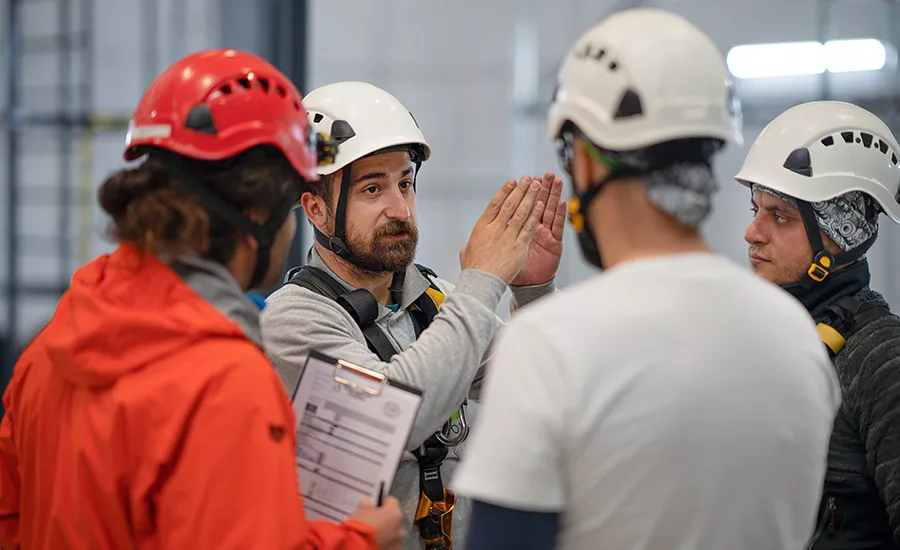Restoration Companies Need to Take a Fresh Approach to Training
3 Ways to Improve Employee Education

Photo credit: RainStar/E+ via Getty Images
For as long as businesses have been providing restoration services, the expertise necessary to complete a job successfully has been trapped by the “keepers of knowledge.”
Who are the “keepers of knowledge”?
These are employees who have worked in the industry for decades. Employees that know the business like the back of their hand. Guys who can tell you right off the top of their heads exactly how to complete a restoration process or task, and exactly what tools you’ll need to do it, before even looking at the job.
In short, these “keepers of knowledge” are restoration wizards, and they have decades of experience just sitting, locked away in their minds.
Unfortunately, the industry is changing, and letting those employees hold all the knowledge is no longer a sustainable business practice. As we start seeing an increase in wildfires, flooding and inclement weather across the country, restoration services are going to be needed more often. With an increase in demand, there undoubtedly comes an increase in the need for staff. Not just your Average Joe employee who stays on for a few months and then packs it in, but quality employees that will stay on for years.
Here’s a quick stat you may not know: for companies in the restoration industry who use learning management software (LMS), the average employee only completes 33% of their training. That is astonishingly low, and shows how much the industry relies on those veterans, on “the keepers of knowledge”, in order to keep things running smoothly.
Businesses in the restoration industry need to start thinking about how they can start putting knowledge into the hands of every employee, not just a select few. That will only happen one way:
By improving your company training.
Doing this will also drastically increase your company morale. There is often a lingering tension between veteran employees and newcomers to the team. A big part of this is because of the lack of knowledge newcomers have, feeling like they have to rely on the veterans in order to succeed. This leads to veterans constantly being interrupted as new staff learn the ropes, taking away their ability to work efficiently, and creating unnecessary tension between both sides, affecting your company morale. The better you train new staff, the quicker they can begin working alongside your veterans, instead of relying on them for support.
Here are three ways your company can improve staff training and see instant improvement in your company morale, the efficiency to which jobs are completed and a stronger workforce overall within your business:
1. Document all procedures.
The number-one way to transfer the knowledge from your veteran employees into the hands of everyone is by documenting each and every process your company uses on a daily basis.
This may seem like a daunting task, but it will save you thousands of dollars in the long run. Companies that still use the “watch and learn” method of training staff are simply wasting valuable work hours. As a result, they take up not one but two, sometimes three, employees' time explaining a task over and over. If specific tasks were documented somewhere and easily accessible, it would be a one-time training procedure and very little company time would be lost.
Of course, documenting company procedures can be difficult, but breaking them into steps as part of a “data-gathering” session can make the process quick and efficient. Involving all employees that have significant experience performing certain tasks will create a broader, more in-depth understanding of the steps that need to be documented in each procedure. Doing this ensures all your employees have access to the information they need to succeed, not just one or two veterans.
2. Invest in long-term instruction.
There comes a point when employees will need certifications to continue growing in their career. Continually offering the opportunity to take instructor-led courses through the RIA, IICRC and
ICRA will encourage new employees to keep improving their knowledge and skillset, and take a lot of the training off the shoulders of your veterans and managers.
Training days or events can often be boring, and employees can quickly lose interest and stop paying attention during these sessions. As a manager or employer, it’s your job to make them fun, and more importantly, memorable.
Take the opportunity to use these sessions as fun team-building activities. Order some pizza, crack a few sodas, and make the most out of a sometimes boring session. The more entertaining you make these events, the better quality training that will come out of it.
3. Make your training automated.
The restoration industry is sometimes in desperate need of quick hires. Overnight, a hurricane or flood can wreak havoc on entire neighborhoods, and the reality is, restoration companies just can’t anticipate the manpower needed for each and every project. As such, making your training processes automatic will allow your managers to step away during busy times and focus on more important details. Put the learning directly into the hands of the new hires; they should control their own destiny.
When we say “automated,” we aren’t suggesting having a bunch of robots running your training sessions. What we mean is that it’s vital that your training and onboarding process is so dialed-in that you can set up new hires with the tools, material and equipment they need, and they can essentially train themselves because your training processes are in-depth, thorough and easily accessible.
When the inevitable happens and you need to hire 20-plus new staff overnight, you’ll thank yourself that it only takes one or two days to get them onboarded and ready to tackle the project.
Improving your company training processes will bolster your business and give you a competitive advantage. It will empower your new employees to want to succeed, because they no longer have to feel like they need to rely on the veterans. With information and training processes properly documented and in the hands of every employee, success and quality workmanship will come that much easier.
You’ll also see an improvement in company morale, as every employee will have the knowledge they need to complete projects collaboratively and as a team. Customers will notice this and be more likely to recommend your business over others.
Finally, making your training program automatic will free up your managers to focus on the things that matter in times of high stress.
With just a few simple tweaks, you can get your training on track and ensure your business is ready for whatever storms (both real and figurative) come your way.
Looking for a reprint of this article?
From high-res PDFs to custom plaques, order your copy today!







